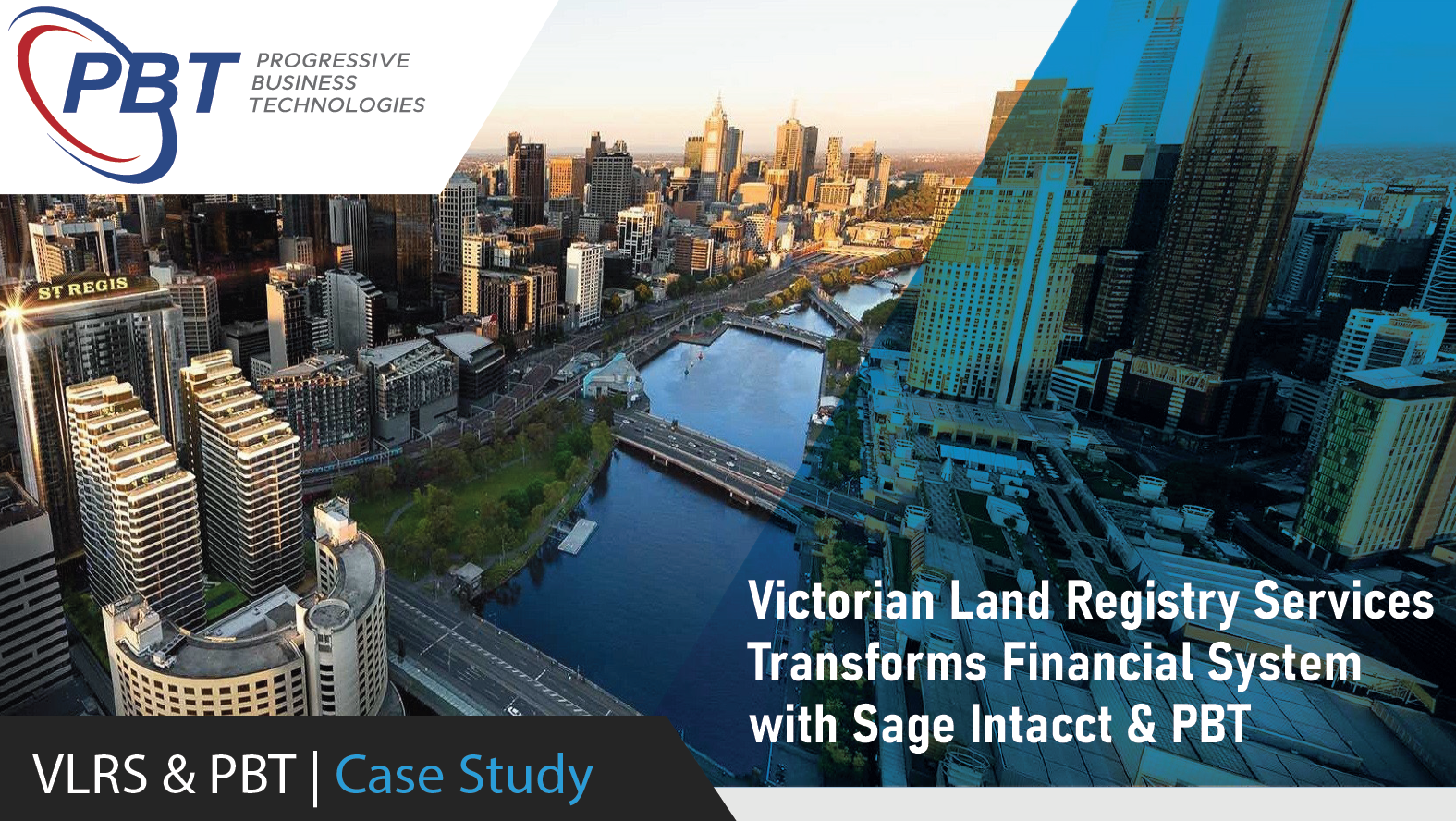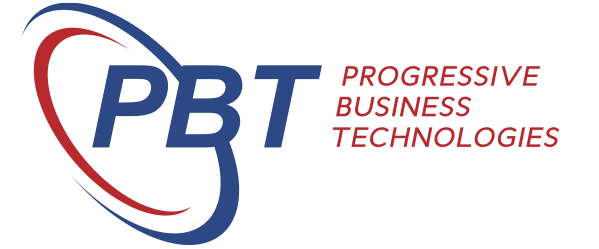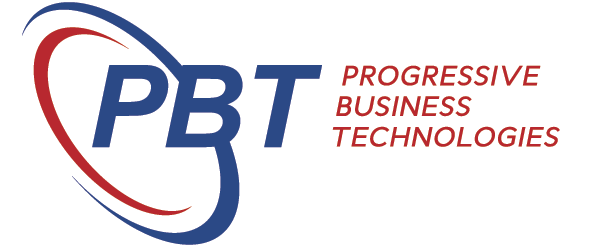
 The Victorian Land Registry Services (VLRS) together with Progressive Business Technologies (PBT) implemented Sage Intacct to transform their financial business operations to improve efficiency, purchasing and data visibility.
The Victorian Land Registry Services (VLRS) together with Progressive Business Technologies (PBT) implemented Sage Intacct to transform their financial business operations to improve efficiency, purchasing and data visibility.
Who are VLRS?
 VLRS is a technology and data insights company that was granted a 40-year concession by the Victorian Government in 2018 to run the commercial operations of the 160-year old Land Titles Office and Registry. It is a vital part of the Victorian economy. Managing more than a million property transactions every year, VLRS maintains the integrity of one of Australia’s largest registries, providing invaluable industry insights, while developing products and services that make life easier for their customers, partners, and the people of Victoria.
VLRS is a technology and data insights company that was granted a 40-year concession by the Victorian Government in 2018 to run the commercial operations of the 160-year old Land Titles Office and Registry. It is a vital part of the Victorian economy. Managing more than a million property transactions every year, VLRS maintains the integrity of one of Australia’s largest registries, providing invaluable industry insights, while developing products and services that make life easier for their customers, partners, and the people of Victoria.
We talked with Ani Chakraborty, General Manager – Technology and Information Services, to understand how the system was implemented and the key benefits achieved by the project.
The Challenge
In the first half of 2020, VLRS undertook a systems transformation review to replace the current financial system which at the time was Wiise. They evaluated the market for cloud-based ERP
(Enterprise Resource Planning) systems suitable for their requirements.
As our business matured, it became clear we needed a better understanding
of our financial data. We couldn’t capture our data to the level of detail required, which led to staff manually trying to segregate data for reports each month.
Ani Chakraborty
VLRS General Manager - Technology and Information Services
VLRS needed to record transactions at a company, department, cost centre, system and project level.
We needed more reporting depth and the ability to record our financial data by key areas. Sage Intacct enables this level of data capture natively with dimension codes and can report on this information to give key business leaders better visibility of their areas.
Ani Chakraborty
VLRS General Manager - Technology and Information Services
This led to improvements in reporting and data analysis. Another focus area for VLRS was to improve their purchasing workflows and approvals. From purchase orders through to supplier payments, VLRS required electronic approval workflows within the system based on each department’s delegated authority levels.
The Solution
By utilising Sage Intacct’s Financial Reporting Engine, it enables reports that were manually prepared to now be system generated and self-served by those that need the information.
The shift to electronic approvals has improved our efficiency and speed in processing
purchase orders and has given us greater visibility over our spending versus budget.
Ani Chakraborty
VLRS General Manager - Technology and Information Services
Key Requirements delived by Sage Intacct included:
-
Multi Entity Management, with the ability to easily switch between companies and produce consolidated reports
-
Direct Bank Feeds of their bank statements for Bank Reconciliation
-
Strict security controls over which areas of data department staff could vi
-
Additional Permissions and Security were added into the application utilising custom Smart Rules and Events
Implementation Process
Dedicated project teams for both VLRS and PBT worked together to complete the project. Due to COVID-19 restrictions, the entire project was delivered remotely.
PBT has a very structured project implementation methodology. We worked closely
throughout the seven main project stages with the VLRS Project Team. VLRS provided strong
oversight and governance of its internal tasks, and key deliverables were kept on track. We
utilised our team consisting of a Project Manager, Business Consultant, Software Developer &
IT Engineer to execute our project tasks and meet the project deadline.
Ben Mitchell
PBT Managing Director
The seamless migration of detailed historical transactions from their existing system to Sage Intacct was of critical importance to VLRS. This required the migration of three years of historical transactions to maintain comparative reporting year on year.
The ability for PBT to understand the database structures of our existing system,
and develop a process using SQL to transform our historical data directly across to Sage Intacct, was significant. This also transformed our historical data to our new
dimensional structures.



